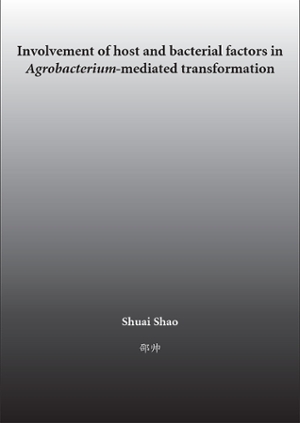Dissertation
Involvement of host and bacterial factors in Agrobacterium-mediated transformation
Agrobacterium tumefaciens, a gram-negative plant pathogen belonging to the family Rhizobiaceae, is the causative agent of crown gall disease, which can affect many plant species including agronomically important ones.
- Author
- Shao, S.
- Date
- 28 November 2019
- Links
- Thesis in Leiden Repository

Agrobacterium tumefaciens, a gram-negative plant pathogen belonging to the family Rhizobiaceae, is the causative agent of crown gall disease, which can affect many plant species including agronomically important ones. It induces tumor formation in plants by transferring a segment of its tumor-inducing plasmid (Ti-plasmid) to plant cells. This transferred DNA (T-DNA) contains genes encoding enzymes involved in the synthesis of auxin (iaaM, iaaH), cytokinin (ipt), opines resulting in uncontrolled proliferation of cells producing opines and plast genes (such as b, c’, d, e, 5, 6a, 6b) for phenotypic plasticity. Under laboratory conditions it is also able to transform other eukaryotes such as yeast Saccharomyces cerevisiae and other fungi (Bundock, et al., 1995; de Groot et al., 1998; Lacroix, et al., 2006). Hence, it was developed and is now extensively used as a vector to create transgenic plants and fungi. In fact Agrobacterium-mediated transformation (AMT) has become the preferred method of transformation of these organisms over the past decades.
